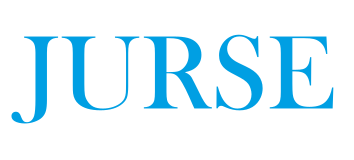Past Events
Best Student Awards
- 2023 Greece
- 2022 Medellin
- 2019 Vannes
- 2017 Dubai
- 2015 Lausanne
- 2013 Sao Paulo
- 2011 Munich
- 2009 Shanghai
- 2007 Paris
Best Oral presentation award: Henri Debray (DLR): Do cities exist in all shapes and sizes? An EO based investigation
Best Poster-pitch video: Sahar Kamalou (K.N.Toosi University of Iran): A novel approach for 3D point cloud de-noising while preserving sharp-features
Best student pitch: Thomas Stark (TUM, DLR): Slum mapping in imbalanced remote sensing datasets using transfer learned deep features.
Best Poster: Nicolas Kraff (DLR): How dynamic are slums? EO-based assessment of Kibera’s morphologic transformation.
The JURSE 2017 best student papers awards were granted respectively to:
1st – Anil Armagan, “Semantic Segmentation for 3D localization in Urban Environments”.
2nd – Nicolas Audebert, “Fusion of Heterogeneous Data in Convolutional Networks for Urban Semantic Labeling”.
3rd – Marzena Wicht, “Urban ventilation corridors – performance evaluation using remotely sensed data”.
The JURSE 2013 best student papers awards were granted respectively to:
1st – Wen Liu, “Building height detection from high-resolution TerraSAR-X imagery and GIS data”.
2nd – Simona Verde, “Toward SAR coherence tomography for analysis of urban areas”.
3rd – Kanika Goel, “Advanced stacking of TerraSAR-X and TanDEM-X data in complex urban areas”.
Best Paper
- 2023 Greece
- 2022 Medellin
- 2019 Vannes
- 2017 Dubai
- 2015 Lausanne
- 2013 Sao Paulo
- 2011 Munich
- 2009 Shanghai
- 2007 Paris
The JURSE 2013 best presented paper award was given to Prof. Dr. Christopher Small, for his work under the title “Mapping urban structure and spatial connectivity with VIIRS and OLS night light imagery”.
Keynotes
- 2023 Greece
- 2022 Medellin
- 2019 Vannes
- 2017 Dubai
- 2015 Lausanne
- 2013 Sao Paulo
- 2011 Munich
- 2009 Shanghai
- 2007 Paris
- Dr. Argyro Kavvada
- Johnny Miller
- Carlos H. Jaramillo
- Xiaoxiang Zhu (German Aerospace Center (DLR))
- Karen Seto (Yale University)
- Florence Tupin (Université Paris-Saclay)
- Massimo Rumor (University of Padova | UNIP) “Remote Sensing for urban applications”
- J. Benediktsson (University of Iceland), “Classification of urban remote sensing imagery based on mathematical morphology”
- C. Elvidge (NOAA), “Change detection in satellite observed nighttime lights: 1992-2003.”
- G. Hepner (ASPRS), “Trends in the U.S. Remote Sensing Industry Forecast – Implications for Urban Remote Sensing.”
Past Sepcial Issues of JURSE
- 2023 Greece
- 2022 Medellin
- 2019 Vannes
- 2017 Dubai
- 2015 Lausanne
- 2013 Sao Paulo
- 2011 Munich
- 2009 Shanghai
- 2007 Paris
Abstract:
Abstract:
Abstract:
Abstract:
